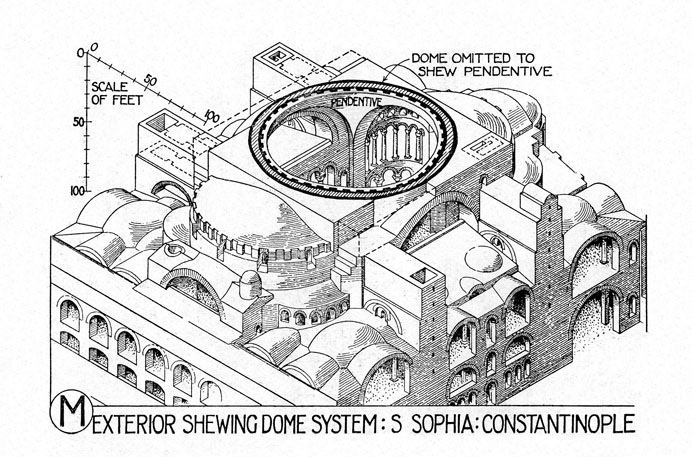Early Middle Ages
The Early Middle Ages (350 to 1050)
In the history of project management the last two centuries of the Roman Empire were spent an in losing battle, where the will for the behemoth empire was waning for Roman citizens that were burdened with its upkeep. In 450 the Roman Empire collapsed. By 750 the Roman world had given way to three heirs: the Byzantine Empire (Eastern Roman Empire), Islam, and the West. In European historiography (the West), the period 350 to 1050 (4th to 11th century) was known as the dark ages, a period of stifled growth.
|
From a project management perspective the Eastern Roman Empire, and Islam is where construction projects continued driven primarily by religion, but nowhere close to the construction boom under the Roman Empire. There was an increase in the use of natural materials like stone and wood as the production of concrete was not readily available. The Eastern Roman Empire's evolution from the ancient Roman Empire started In 330 before the collapse of the Roman Empire in 476. The root cause for both was the same, the Roman Empire was too expensive and difficult to administrate. The Emperor Constantine I transferred the capital from Nicomedia in Anatolia to the city of Byzantium, renamed New Rome or Constantinople, splitting the empire. As a second Rome it was well-positioned astride the trade routes between East and West. Constantine recovered much of the Roman Empire’s military strength and enjoyed a period of stability and prosperity. The Emperor Justinian ordered the construction of a cathedral, Hagia Sophia. As the principal stakeholder he set the project charter that the cathedral was to be a showpiece and surpass in magnificence all earlier cathedrals. The timeline for the project was set to complete in an extremely aggressive five year period to gratify the emperor so he could realize the benefits in his reign. This could only be achieved with experienced architects and a very large workforce of ten thousand laborers that was well organized and depended on communication through the hierarchy of one hundred master builders supervised by the architects. The project had to be decomposed and the sequence of activities carefully managed and scheduled because of the limited size of the construction site. |
|

The speed of project construction, just under six years, was remarkable when compared with the elongated project timelines of the Gothic Cathedrals. Roman construction techniques continued to be used, where a core of brick and concrete were used and finished off with a veneer of marble. With the Hagia Sophia project some environmental risks were mitigated when they workforce discovered and applied cement with earthquake-resistant properties withstanding earthquakes of up to 7.5 on the Richter scale.
